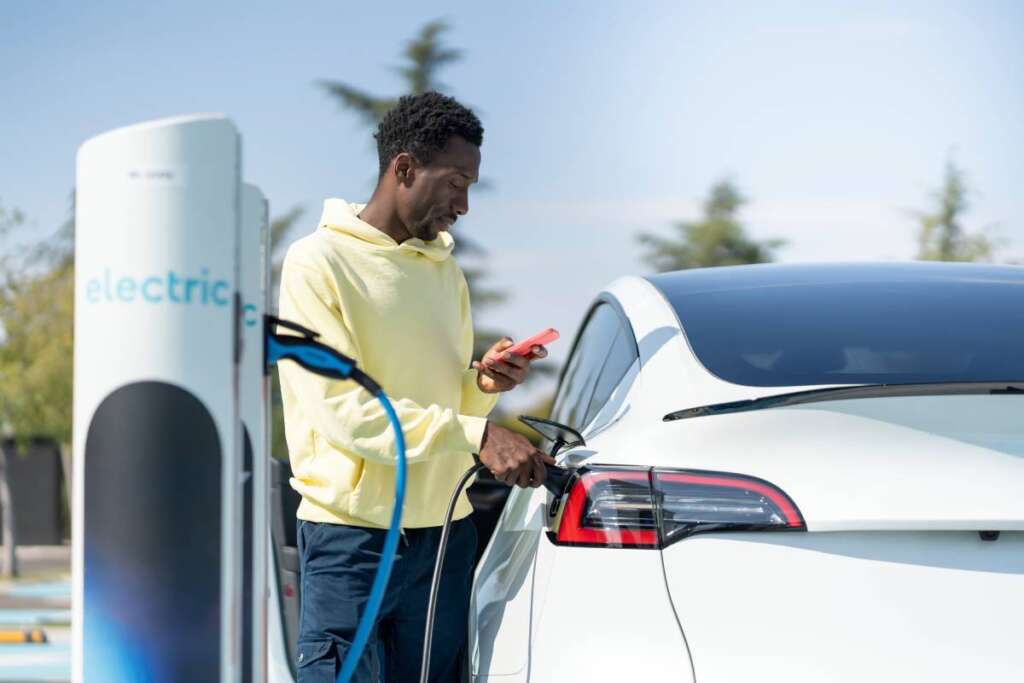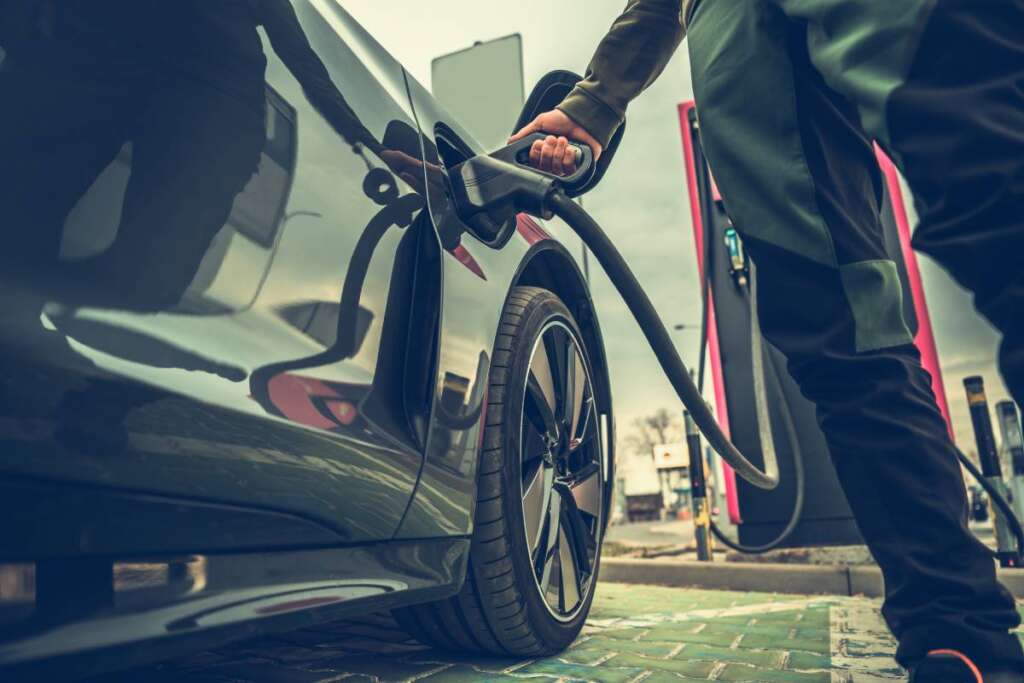The world of automobiles is changing faster than ever. Electric vehicles (EVs) are becoming more popular, promising cleaner energy, lower costs, and advanced technology. But petrol cars still dominate the roads, trusted for their long-range capability and easy refuelling.
This raises important questions for drivers everywhere: Which is better, an EV or a petrol car? Can a car use both electricity and fuel? And which option is truly best for long drives? Let’s explore the answers.
Understanding the Basics: EV vs Petrol Car
Before comparing, it helps to understand the main difference between electric vehicles and petrol cars.
- Electric Vehicles (EVs):
EVs run entirely on electricity stored in rechargeable batteries. These batteries power an electric motor that drives the wheels. There are no tailpipe emissions, and they rely on charging stations or home chargers for energy replenishment. - Petrol Cars:
Petrol cars use internal combustion engines (ICE) that burn gasoline to create power. This process releases carbon dioxide and other gases, which contribute to air pollution and climate change. Petrol vehicles have been around for over a century and benefit from well-established infrastructure like fuel stations and repair networks.
Performance: Instant Power vs Engine Muscle
Performance is one of the first things car buyers consider.
- EVs:
Electric motors deliver instant torque, meaning acceleration is smooth and immediate. Cars like the Tesla Model 3 or Porsche Taycan can go from 0–100 km/h in under 4 seconds, a performance once reserved for supercars. EVs also run quietly, reducing noise pollution and creating a calm driving experience. - Petrol Cars:
Petrol engines rely on mechanical combustion, which means a slight delay before power reaches the wheels. However, petrol cars still offer strong and consistent performance, especially in high-speed driving or racing conditions. Enthusiasts often appreciate the sound and feel of a traditional engine, something EVs lack.
In many cases, car owners also personalise or upgrade their vehicles for better performance or sound systems. For example, companies like Bankstown Sound specialise in enhancing in-car audio and comfort, an area where both EV and petrol owners invest to elevate their driving experience. Whether you’re enjoying the quiet cabin of an EV or the engine roar of a petrol car, a premium sound setup can make every journey more enjoyable.
Verdict:
For everyday city driving and instant acceleration, EVs take the lead. For those who love the roar and responsiveness of an engine, petrol cars still hold emotional appeal.
Cost Efficiency: Fuel vs Electricity

Cost is a critical factor for most car owners, and here, EVs show clear advantages.
- EV Running Costs:
Charging an EV typically costs much less than filling a tank with petrol. Depending on local electricity rates, driving 100 km in an EV can cost 70–80% less than a petrol car. Maintenance is also cheaper. EVs have fewer moving parts and don’t need oil changes, spark plugs, or exhaust system repairs. - Petrol Car Costs:
Petrol prices fluctuate with global oil markets, and over time, fuel costs add up significantly. Maintenance is also more frequent, especially for older engines, adding to long-term expenses.
Verdict:
If you’re looking to save money on daily commutes, EVs are the clear winner.
Environmental Impact: Clean vs Carbon
One of the biggest reasons behind the EV movement is its environmental benefit.
- EVs:
Since EVs don’t burn fuel, they emit no tailpipe pollution. They help reduce urban air pollution and contribute to lowering greenhouse gas emissions, especially when charged using renewable energy sources like solar or wind. However, manufacturing EV batteries does have environmental costs, including mining for lithium, cobalt, and nickel. Fortunately, recycling and second-life battery programs are growing rapidly. - Petrol Cars:
Petrol cars emit CO₂, carbon monoxide, and nitrogen oxides, which directly impact air quality and climate change. Even with improved fuel efficiency and catalytic converters, combustion engines cannot compete with the zero-emission potential of EVs.
Verdict:
In terms of environmental sustainability, EVs are far superior, especially when powered by clean electricity.
Convenience and Infrastructure: Charging vs Refuelling

Infrastructure remains one of the key considerations for car owners.
- EV Charging:
Home charging is a major advantage; you can plug in your EV overnight and wake up to a full charge. However, on long trips, finding charging stations can be challenging, depending on where you live. While urban areas and highways are increasingly equipped with fast chargers, rural regions still lag. - Petrol Refuelling:
Petrol stations are virtually everywhere, and refuelling takes just a few minutes. For those who travel frequently or drive long distances, the convenience of quick refuelling can’t be ignored.
Verdict:
For daily use in cities, EVs are incredibly convenient. For cross-country or rural travel, petrol cars still offer greater reliability.
Range and Long Drives?
When it comes to long drives, range anxiety, the fear of running out of charge before reaching a station, is a real concern for EV owners.
- EV Range:
Most modern EVs offer between 300–600 km per charge, depending on model and driving habits. High-end models like the Tesla Model S can even exceed 650 km. However, factors such as speed, temperature, and air conditioning can reduce range. Charging takes longer than refuelling, and even fast chargers may require 30–45 minutes to reach 80%. - Petrol Range:
Petrol cars usually have a range of 600–800 km per tank, depending on fuel efficiency. Refuelling takes less than 5 minutes, making them ideal for long-distance travel or remote routes where charging stations are scarce.
Verdict:
For long, uninterrupted journeys, petrol cars still hold the edge. But for planned routes with charging infrastructure, EVs are catching up quickly.
Can a Car Have Both EV and Petrol?

Yes, and these vehicles are known as hybrid or plug-in hybrid electric vehicles (PHEVs).
- Hybrid Cars (HEV):
These vehicles, like the Toyota Prius, use both a petrol engine and an electric motor. The system automatically switches between the two power sources for efficiency. The electric motor assists during acceleration or slow speeds, reducing fuel consumption. - Plug-in Hybrid Electric Vehicles (PHEV):
PHEVs have larger batteries that can be charged via a plug, allowing short-distance driving purely on electric power (usually 40–80 km) before switching to petrol for longer journeys. This combination gives drivers the flexibility of EV efficiency and petrol range.
Verdict:
If you want the best of both worlds, electric efficiency and long-range flexibility, PHEVs are a great transitional option until charging infrastructure becomes fully mature.
Maintenance and Lifespan
- EVs:
With fewer moving parts and no need for engine oil, EVs require less frequent servicing. Battery health is the main concern, but most manufacturers offer 8 to 10-year warranties on batteries. Regenerative braking also extends brake lifespan. - Petrol Cars:
Require regular oil changes, filter replacements, and engine checks. Mechanical wear and tear is higher, and maintenance costs increase with age.
Verdict:
For reliability and low maintenance, EVs take the win.
Driving Experience: Comfort and Feel

EVs offer a futuristic driving feel quiet, smooth, and vibration-free. The lack of gears makes acceleration seamless. Many drivers find the experience relaxing, though some enthusiasts miss the sound and mechanical feel of petrol engines.
Petrol cars, on the other hand, provide tactile engagement, gear shifts, engine revs, and a visceral connection with the vehicle. For car enthusiasts, this experience remains unmatched.
Verdict:
For comfort and modern driving, EVs excel. For classic driving enjoyment, petrol cars still charm.
Which Is Best for a Long Drive?
Let’s break this down:
| Feature | EV | Petrol Car |
| Range | 300–600 km (some >650 km) | 600–800 km |
| Refuelling/Charging | 30–60 mins | 5 mins |
| Infrastructure | Expanding but limited in remote areas | Widely available |
| Comfort | Quiet, smooth | Traditional driving feel |
| Cost per km | Lower | Higher |
| Maintenance | Lower | Higher |
Conclusion for Long Drives:
If your route has reliable charging stations and you plan your trip, a modern EV can handle long drives efficiently. However, if you’re travelling across rural or less-developed areas, or need spontaneous long-distance capability, a petrol car or plug-in hybrid remains the more practical option.
The Future: Towards an Electric Era
Governments worldwide are pushing for cleaner transport. Many countries have announced timelines to phase out new petrol cars by 2035 or earlier. Automakers are investing heavily in battery technology, longer ranges, and faster charging. Solar-powered charging networks and battery swapping systems are also emerging, making EVs more viable than ever.
Petrol cars, while still dominant, are gradually becoming less favourable as fuel costs rise and emission regulations tighten. Yet, they won’t disappear overnight — especially in areas where EV infrastructure is still developing.
Conclusion
So, which is better — EV or a petrol car?
- For city driving and daily commutes: EVs are cleaner, cheaper, and more efficient.
- For rural areas or frequent long trips: Petrol cars or plug-in hybrids are currently more practical.
- For the future: The balance clearly tilts toward EVs as technology and infrastructure evolve.
And yes, a car can have both EV and petrol power through hybrid systems, offering a flexible bridge between tradition and innovation. Ultimately, the best choice depends on your lifestyle, driving habits, and travel needs. As charging networks grow and battery technology improves, the electric revolution will likely make EVs the dominant choice for both short and long drives in the years ahead.







Leave a Comment